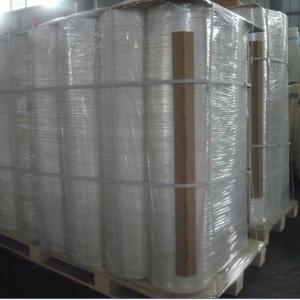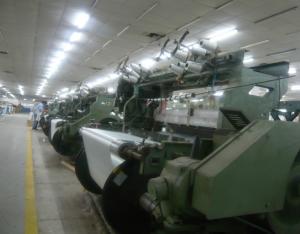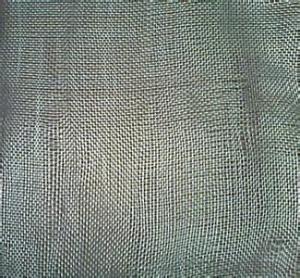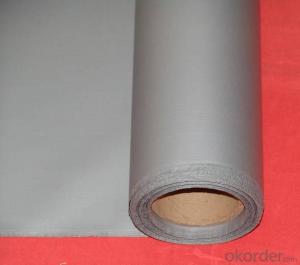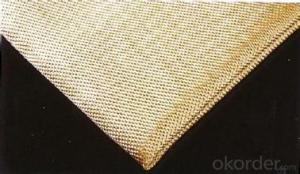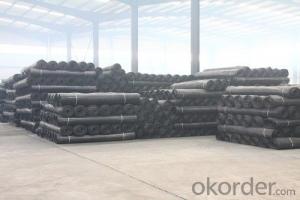Fiberglass Fabrics For Surfboard
- Loading Port:
- Qingdao Port
- Payment Terms:
- TT or LC
- Min Order Qty:
- 10000 M2 m²
- Supply Capability:
- 50000000 M2 Per Year m²/month
OKorder Service Pledge
OKorder Financial Service
You Might Also Like
Introduction of Fiberglass Fabrics for surfboard:
The Fiberglass Fabrics for surfboard is a kind of alkali-free glass fiber fabrics produced by utilizing abroad advanced technology and equipment. By means of a surface treatment it has excellent electro-insulation property and workability. It is used mainly in printed circuit boards, and is also used as base materials for computers and home electro-devices.
The Fiberglass Fabrics for surfboard is weaved of high quality C-glass fibers or E-glass fibers.
The excellent properties of Fiberglass Fabrics for surfboard:
* Dimensional stability
* High Strength
* Fire resistance, High heat resistance
* Good chemical resistance
* Durability
* Forms around complex surface shapes
Application of Fiberglass Fabrics for surfboard:
Fiberglass fabrics can be used in a variety of applications, including construction in waterproofing applications for roofing and foundation, wall treatment, pipeline joint wrap.
Packing of Fiberglass Fabrics for surfboard:
The Fiberglass fabric for surfboard is wrapped on a paper tube with inner diameters of 50. 8, 76 or 152mm. Each roll is wrapped in a plastic bag, then to be packed in a carton box. The rolls are to be horizontally placed.
Width (cm): 90, 100, 127
Length (m): 100, 200, 300, 400
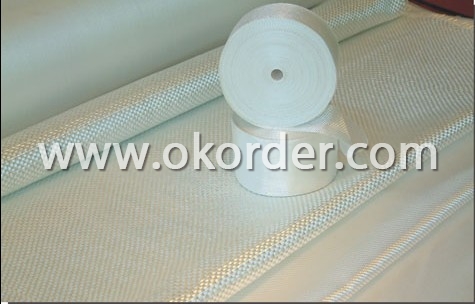
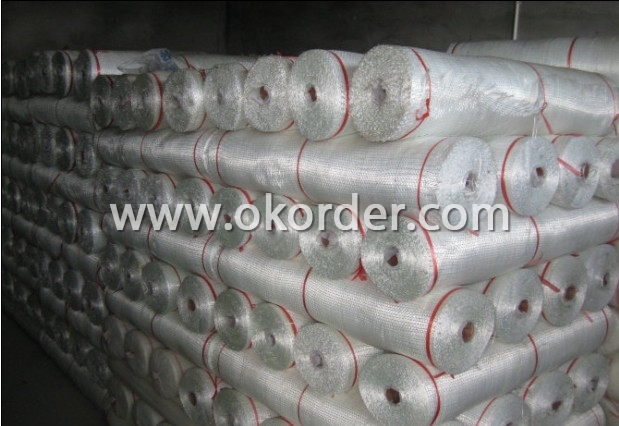
- Q:Is fiberglass fabric suitable for making outdoor furniture covers?
- Indeed, fiberglass fabric proves to be an ideal material for crafting covers for outdoor furniture. Renowned for its robustness and ability to withstand harsh weather, it becomes an exceptional choice for shielding outdoor furniture against rain, sunlight, and wind. Its resistance to water and UV rays, coupled with its capacity to endure extreme temperatures without deterioration or fading, further enhance its suitability. Furthermore, fiberglass fabric's lightweight nature simplifies handling and installation on furniture. It also fends off mold, mildew, and pests, ensuring the cleanliness and protection of your furniture. All in all, fiberglass fabric emerges as a dependable and enduring option for fashioning outdoor furniture covers.
- Q:How is fiberglass fabric used in the production of electrical insulation tapes?
- Fiberglass fabric is used in the production of electrical insulation tapes because it has excellent electrical insulation properties and heat resistance. It is often used as a base material in these tapes to provide a protective layer that helps prevent electrical current from escaping or causing short circuits. Fiberglass fabric also adds strength and durability to the tape, allowing it to withstand high temperatures and harsh environments.
- Q:How is fiberglass fabric used in the production of fireproof curtains?
- Fiberglass fabric is used in the production of fireproof curtains due to its excellent fire-resistant properties. The fabric is woven from fine strands of glass, which can withstand high temperatures and prevent the spread of fire. By incorporating fiberglass fabric into the curtains, they become highly resistant to flames and can effectively block the passage of heat and smoke, providing an added layer of safety and protection in fire-prone areas.
- Q:What is the weight of fiberglass fabric?
- The weight of fiberglass fabric can vary depending on the specific type and thickness of the fabric. Generally, fiberglass fabric is measured in ounces per square yard (oz/yd2) or grams per square meter (g/m2). Common weights for fiberglass fabric range from 0.5 oz/yd2 (17 g/m2) to 3.0 oz/yd2 (102 g/m2) or more. Lightweight fiberglass fabrics are often used for applications such as reinforcing and laminating, while heavier fabrics are commonly used for structural reinforcement or insulation purposes.
- Q:Roof with a single group of waterproof coating and glass fiber cloth done, but the past is still in the seam water seepage, how should remediation?
- Without plugging king, deep 2CM can clean up the gap, using block gap ointment caulking first brush a waterproof coating and sealing, and waterproof paint.
- Q:What is the typical lead time for ordering fiberglass fabrics?
- The typical lead time for ordering fiberglass fabrics can vary depending on the supplier and the specific product. However, it is common to expect lead times ranging from a few days to a couple of weeks. It is advisable to contact the supplier directly to get an accurate estimate for the particular fiberglass fabric being ordered.
- Q:Is fiberglass fabric durable?
- Yes, fiberglass fabric is known for its durability. It is a strong and resilient material that is designed to withstand high temperatures, harsh chemicals, and extreme weather conditions. It is resistant to abrasion, tearing, and impact, making it suitable for various applications where durability is required. Additionally, fiberglass fabric has a long lifespan and does not easily degrade or deteriorate over time.
- Q:Can fiberglass fabric be used for reinforcement in construction materials?
- Yes, fiberglass fabric can be used for reinforcement in construction materials. Fiberglass is a strong and durable material that is commonly used in construction for its reinforcement properties. It is commonly used in applications such as concrete reinforcement, roofing materials, and insulation. Fiberglass fabric is lightweight, corrosion-resistant, and has high tensile strength, making it an ideal choice for reinforcing various construction materials. It helps to increase the strength and durability of the materials, improving their resistance to cracking, impact, and other forms of damage. Additionally, fiberglass fabric is easy to work with and can be easily molded or shaped to fit different construction needs. Overall, fiberglass fabric is a reliable and versatile material that is widely used for reinforcement in construction materials.
- Q:Are there any environmental considerations associated with fiberglass fabrics?
- Fiberglass fabrics have several environmental considerations to take into account. Firstly, the production process involves extracting raw materials like silica sand and limestone, which can harm the environment through habitat destruction and landscape alteration. Additionally, manufacturing fiberglass fabrics requires significant energy consumption, leading to greenhouse gas emissions and climate change. Moreover, the use of fiberglass fabrics often involves toxic chemicals like resins and adhesives, which pose risks to human health and the environment. These chemicals can potentially seep into soil and water sources, endangering ecosystems and biodiversity. Furthermore, fiberglass fabrics are not biodegradable and can persist in the environment for a long time. If not properly managed at the end of their life cycle, they can contribute to waste accumulation in landfills or incineration, both of which have negative environmental impacts. Nevertheless, it is worth noting that fiberglass fabrics have some positive environmental aspects. They are highly durable and have a long lifespan, reducing the need for frequent replacements and conserving resources. Additionally, fiberglass fabrics can save energy when used in insulation and construction materials, leading to decreased energy consumption and greenhouse gas emissions in the long term. In conclusion, while there are environmental considerations associated with fiberglass fabrics, their impact can be minimized through sustainable production practices, appropriate waste management, and the exploration of alternative, more eco-friendly materials.
- Q:What kind of fiberglass cloth is used for neoprene waterproofing coating?
- Generally can be divided into solvent and emulsion!
1. Manufacturer Overview |
|
|---|---|
| Location | Shandong, China |
| Year Established | 1964 |
| Annual Output Value | Above US$ 20 Million |
| Main Markets | 20.00% North America 20.00% South America 10.00% Eastern Europe 10.00% Southeast Asia 10.00% Northern Europe 10.00% South Asia 10.00% Western Europe 5.00% Africa 5.00% Mid East |
| Company Certifications | ISO9001:2000 |
2. Manufacturer Certificates |
|
|---|---|
| a) Certification Name | |
| Range | |
| Reference | |
| Validity Period | |
3. Manufacturer Capability |
|
|---|---|
| a)Trade Capacity | |
| Nearest Port | Qingdao Port |
| Export Percentage | 31% - 40% |
| No.of Employees in Trade Department | 10-20 People |
| Language Spoken: | English; Chinese; |
| b)Factory Information | |
| Factory Size: | Above 200,000 square meters |
| No. of Production Lines | Above 10 |
| Contract Manufacturing | Design Service Offered; Buyer Label Offered |
| Product Price Range | High; Average |
Send your message to us
Fiberglass Fabrics For Surfboard
- Loading Port:
- Qingdao Port
- Payment Terms:
- TT or LC
- Min Order Qty:
- 10000 M2 m²
- Supply Capability:
- 50000000 M2 Per Year m²/month
OKorder Service Pledge
OKorder Financial Service
Similar products
New products
Hot products
Hot Searches
Related keywords
